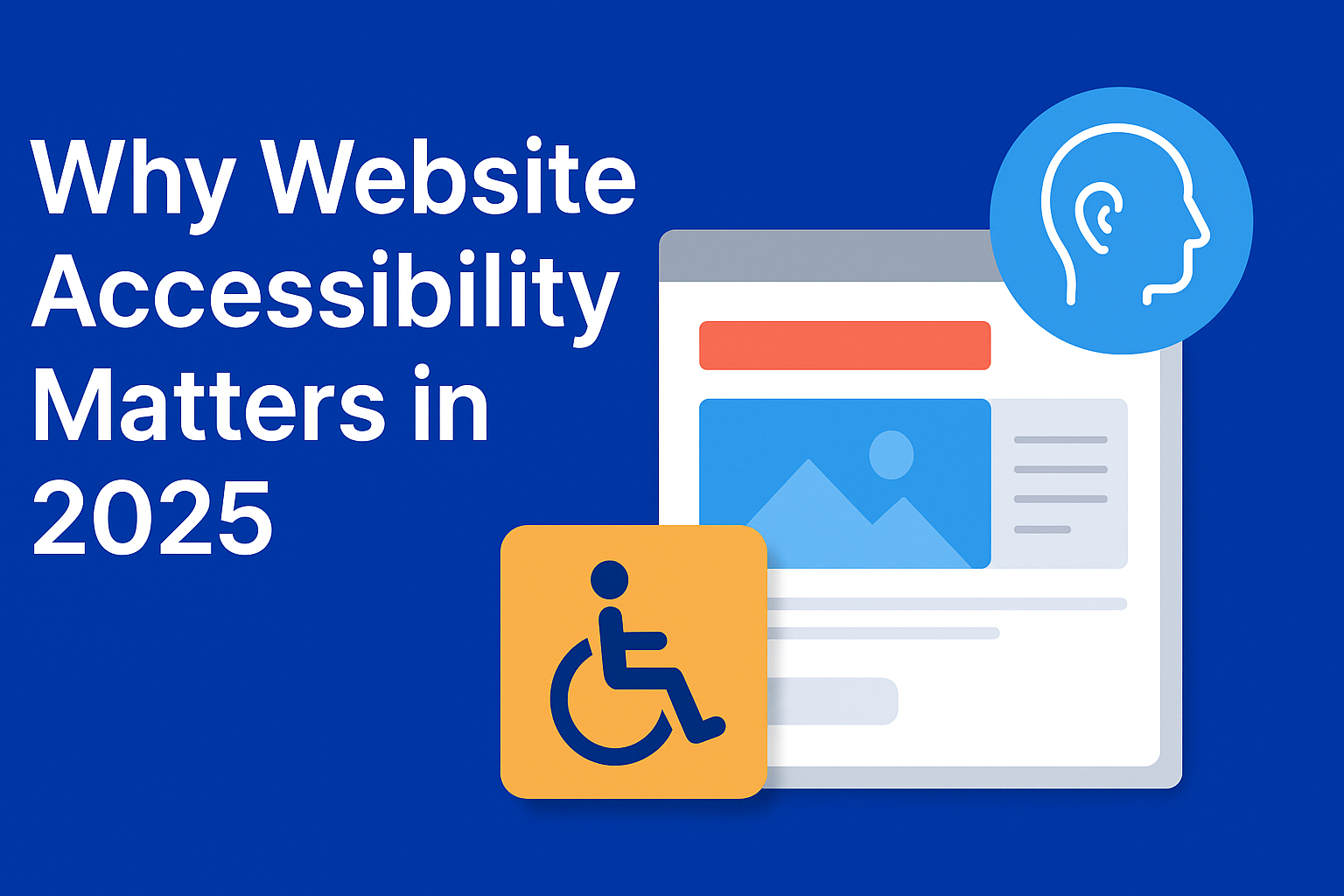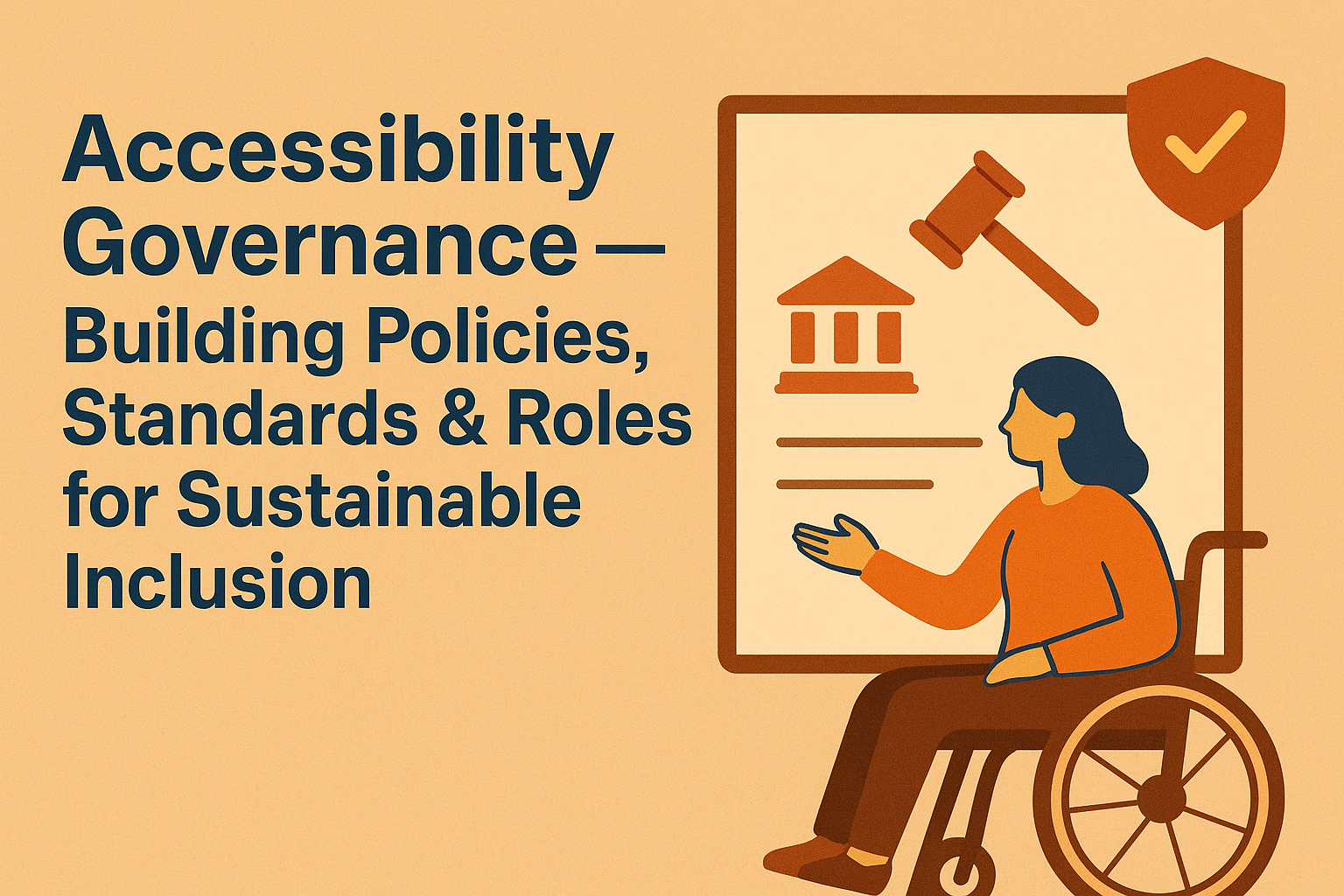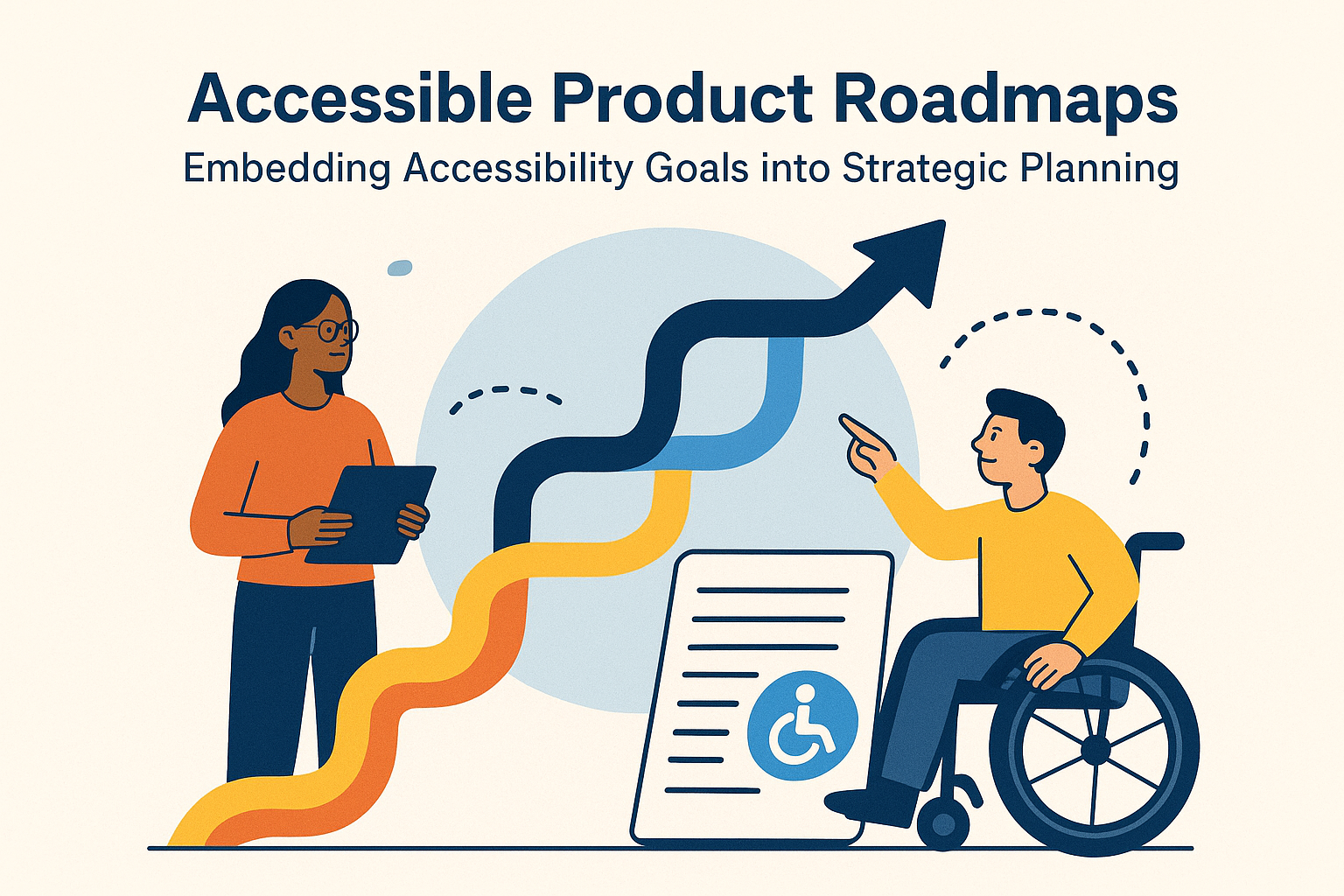Why Website Accessibility Matters in 2025
Why Website Accessibility Matters in 2025
As we move deeper into the digital-first era, accessibility is no longer a box to tick—it is a core part of business growth, compliance, and customer experience. In 2025, businesses across every sector face stricter regulations, increasing public awareness, and an expanding global market of users who depend on inclusive technology. Accessibility isn’t just a moral obligation; it’s a competitive advantage.
The Accessibility Imperative
Roughly 1.3 billion people worldwide live with some form of disability. That’s nearly one in six individuals—a massive audience segment that many websites and applications still overlook. Making digital experiences accessible ensures that everyone, regardless of ability, can interact with and benefit from your services. For companies, it’s a chance to align social responsibility with business opportunity.
Legal and Regulatory Pressure in 2025
Legislation continues to evolve quickly. In the United States, the Americans with Disabilities Act (ADA) has become the basis for a rising number of lawsuits against businesses with inaccessible websites. The Department of Justice reaffirmed that websites and mobile apps fall under Title III of the ADA, meaning accessibility is not optional. Meanwhile, the European Accessibility Act (EAA) comes into full enforcement in 2025, extending accessibility requirements to e-commerce, banking, transportation, and digital services across the EU.
For global brands, the landscape is complex: the UK’s Equality Act, Canada’s ACA, and Australia’s DDA all enforce similar principles. Companies that ignore accessibility risk not only fines and lawsuits but also lost trust among increasingly inclusive consumers.
Business Benefits Beyond Compliance
Accessibility isn’t just about avoiding legal risk. At Accesify.io, we emphasize that inclusive design drives measurable ROI. Accessible websites rank better on search engines, convert more visitors into customers, and reduce churn by improving usability for everyone. For example, ensuring proper heading hierarchy, descriptive alt text, and keyboard navigation doesn’t just help screen-reader users—it improves SEO structure and mobile UX too.
Research from WebAIM and Google has shown that pages with accessible HTML semantics load faster, are easier to crawl, and provide a better user experience on diverse devices. In a competitive online environment, these improvements can directly translate to higher conversion rates.
Accessibility and Brand Reputation
Today’s users expect brands to demonstrate inclusivity. A commitment to accessibility shows empathy, responsibility, and forward-thinking leadership. When organizations invest in accessibility, they signal that they value every customer. This brand positioning fosters loyalty and advocacy—especially among communities that have historically been excluded from the digital space.
The Cost of Ignoring Accessibility
Ignoring accessibility has both tangible and intangible costs. Apart from the legal risks, inaccessible websites lose a potential customer base estimated at over $8 trillion in disposable income globally. Moreover, retrofitting accessibility after a site is launched costs up to 30 times more than integrating it from the start. Tools such as Accesify.io’s automated scanner and accessibility widget help businesses identify and remediate issues early, keeping costs low and compliance high.
Emerging Trends in 2025
- AI-Powered Accessibility: Machine learning is improving alt-text generation, form validation, and real-time content adaptation for users with disabilities.
- Voice and Gesture Interfaces: As smart devices evolve, accessibility is expanding beyond traditional input methods, demanding new design considerations.
- WCAG 3.0 Preparation: The upcoming standard will emphasize outcome-based scoring, user testing, and holistic experience metrics over binary pass/fail checks.
- Accessibility Automation: SaaS platforms like Accesify.io now provide continuous monitoring rather than one-time audits, ensuring compliance with every site update.
Accessibility as a Driver of Innovation
Accessibility has often been the birthplace of innovation. Closed captioning led to subtitles for global content. Screen readers accelerated voice assistant technology. Responsive design began as a solution for accessible interfaces and became a universal web standard. By prioritizing accessibility, organizations often discover new ways to enhance usability for everyone.
The Role of Automation and AI
Manual testing alone cannot keep up with the dynamic nature of modern websites. Automated accessibility scanning tools, such as Accesify.io, use AI-driven analysis to flag WCAG violations in real time, generate actionable reports, and even apply smart fixes where possible. These tools integrate seamlessly with popular CMS platforms and CI/CD pipelines, helping developers catch accessibility regressions before they go live.
While automation accelerates progress, human validation remains essential. Accesify.io’s philosophy combines automated scanning with guided remediation steps, empowering teams to blend efficiency with empathy—ensuring not just compliance, but truly usable experiences for all.
Understanding the WCAG 2.2 and 3.0 Standards
The Web Content Accessibility Guidelines (WCAG) form the global benchmark for digital accessibility. The 2.2 update, released in late 2023, introduced new success criteria around focus visibility, drag-and-drop controls, and authentication processes. WCAG 3.0, expected to be finalized within the next few years, shifts focus from technical compliance to user outcomes, promoting flexibility and innovation in accessible design.
By staying aligned with WCAG principles, businesses demonstrate a proactive commitment to inclusion. Accesify.io helps clients track compliance across WCAG versions, automatically highlighting where improvements are needed as standards evolve.
Designing for Everyone
True accessibility starts with empathy-driven design. Creating an inclusive interface means thinking beyond disability categories—designing for situational, temporary, and permanent challenges alike. High-contrast modes help users in bright sunlight. Keyboard navigation aids power users who prefer not to use a mouse. Captions assist not just deaf users but also anyone in noisy environments.
At Accesify.io, we advocate “design for one, benefit for all.” Accessibility makes products more usable for every audience segment, improving engagement, dwell time, and overall satisfaction.
Accessibility and SEO Synergy
Search engines are effectively the largest blind users on the web—they rely on semantic markup, text alternatives, and clear structure to interpret content. Accessibility optimizations—such as meaningful headings, descriptive link text, and proper ARIA roles—align perfectly with SEO best practices. In other words, when you make your site more accessible, you also make it more discoverable.
In 2025, Google’s algorithms increasingly reward sites that prioritize user experience and technical health. Accessibility metrics will likely play a greater role in search rankings as part of Core Web Vitals and user-centric performance signals. Businesses using Accesify.io can monitor accessibility alongside SEO improvements through integrated dashboards.
Building an Accessibility-First Culture
Compliance is not a one-time achievement—it’s an ongoing process that requires organizational culture change. Here are key strategies:
- Leadership Commitment: Executives should publicly commit to accessibility as a business priority, not just a legal obligation.
- Inclusive Hiring: Involving people with disabilities in testing and feedback ensures authentic insights.
- Cross-Functional Collaboration: Developers, designers, marketers, and content teams must share responsibility for accessibility goals.
- Continuous Monitoring: Use Accesify.io to perform recurring scans that detect regressions after every code or content update.
How Accessibility Enhances Customer Trust
Consumers increasingly choose to engage with brands that reflect their values. Inaccessible experiences are now seen as exclusionary or outdated. When customers notice that a company invests in accessibility—through accessible design, assistive widgets, or clear accessibility statements—they’re more likely to trust that brand with their time and money.
According to a 2024 Adobe survey, 76% of users said they prefer brands that actively improve accessibility. This trust directly translates into customer retention and referrals. Accessibility, therefore, is not merely compliance; it’s brand strategy.
Real-World Success Stories
Global companies like Microsoft, Apple, and Shopify have demonstrated that accessibility leads to innovation. Microsoft’s adaptive controllers opened new doors for gaming inclusivity, while Apple’s VoiceOver technology revolutionized mobile usability for blind users. Shopify integrated accessibility checks into their theme system—raising the bar for e-commerce worldwide.
Smaller businesses using Accesify.io have reported similar success: after implementing automated scanning and widget solutions, they saw a 12–18% improvement in SEO visibility, a 20% decrease in bounce rates, and positive feedback from users who previously struggled with accessibility barriers.
Accessibility Widgets: Empowering Users
Accessibility widgets give users control over their browsing experience. With features like adjustable text size, color contrast toggles, and screen reader enhancements, they enable visitors to personalize content according to their needs. Accesify.io’s accessibility widget is fully customizable, lightweight, and compliant with major privacy and accessibility frameworks, ensuring an inclusive experience that fits your brand’s design system.
Measuring Accessibility ROI
Accessibility investments can be quantified through several KPIs:
- Conversion Rates: Improved usability and readability often increase conversions.
- Bounce Rates: Accessible layouts reduce user frustration and abandonment.
- Customer Lifetime Value: Inclusive brands earn repeat customers and positive reputation.
- Legal Risk Reduction: Proactive compliance prevents costly litigation.
Using Accesify.io’s analytics dashboard, organizations can track these metrics, showing executives clear data on how accessibility contributes to business performance.
Preparing for the Future
The web of 2025 is more interconnected and immersive than ever. As AI-driven content, AR/VR interfaces, and IoT devices proliferate, accessibility will expand beyond websites into every digital touchpoint. Businesses that embed accessibility thinking now will be better prepared for these shifts.
How Accesify.io Helps You Stay Ahead
Accesify.io simplifies accessibility for modern businesses. Our platform provides:
- ⚡ Instant Accessibility Scans: Detect WCAG, ADA, and EAA issues within seconds.
- 🧩 Customizable Accessibility Widgets: Empower users to adjust display settings and improve usability.
- 📊 Compliance Reporting: Generate detailed, shareable reports for audits or management reviews.
- 🔁 Continuous Monitoring: Automated scanning that runs with every new page or site update.
By integrating Accesify.io, organizations ensure that accessibility becomes a living, evolving part of their digital strategy—not an afterthought.
Conclusion: Accessibility as a Core Business Strategy
In 2025, digital accessibility is the defining characteristic of a mature, customer-centric organization. Beyond compliance, it represents empathy, inclusivity, and innovation. Companies that lead in accessibility don’t just reach more users—they inspire loyalty, build credibility, and future-proof their digital presence.
At Accesify.io, we believe accessibility is everyone’s responsibility—and everyone’s opportunity. Our mission is to make compliance effortless, usability universal, and inclusion achievable for all. Whether you’re auditing your site for the first time or scaling accessibility across global brands, Accesify.io helps you deliver experiences that truly work for everyone.
Start your accessibility journey today—scan your website for free at Accesify.io and join the movement toward a more inclusive digital future.





